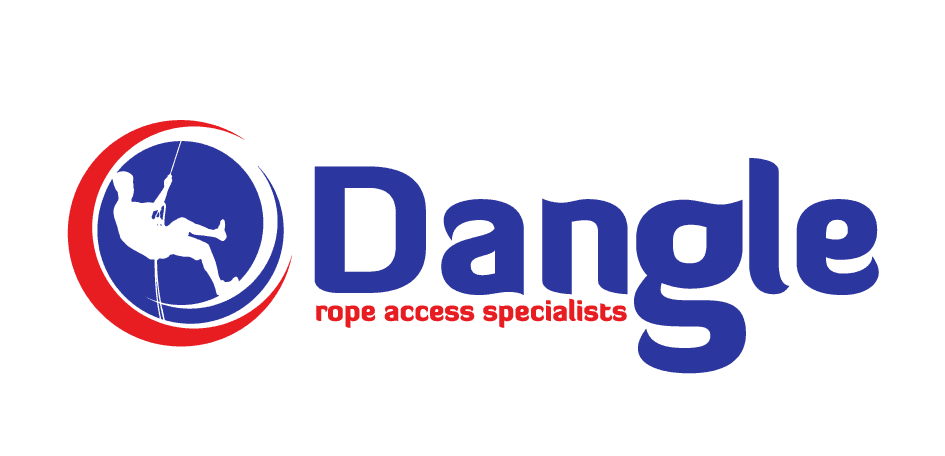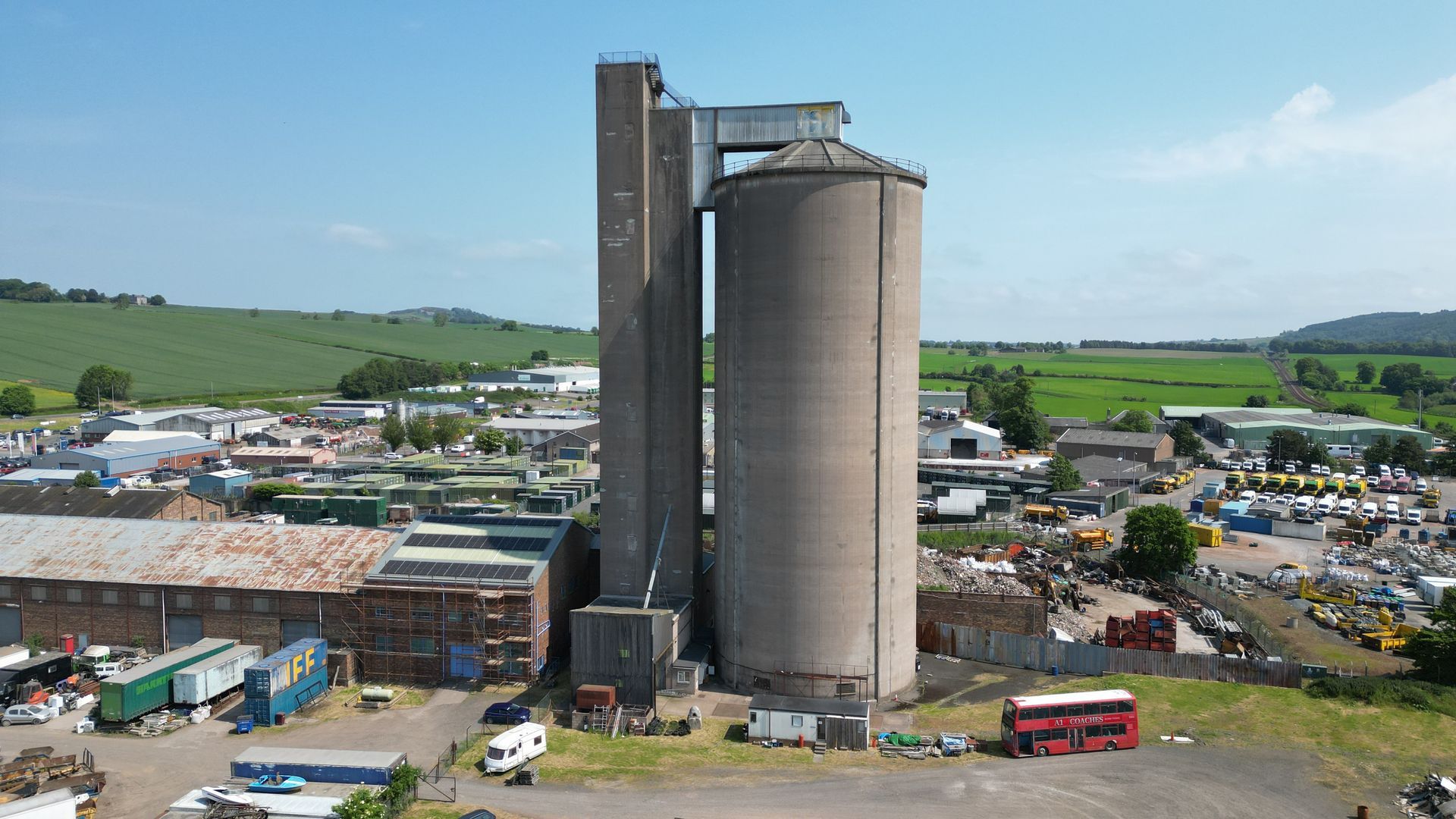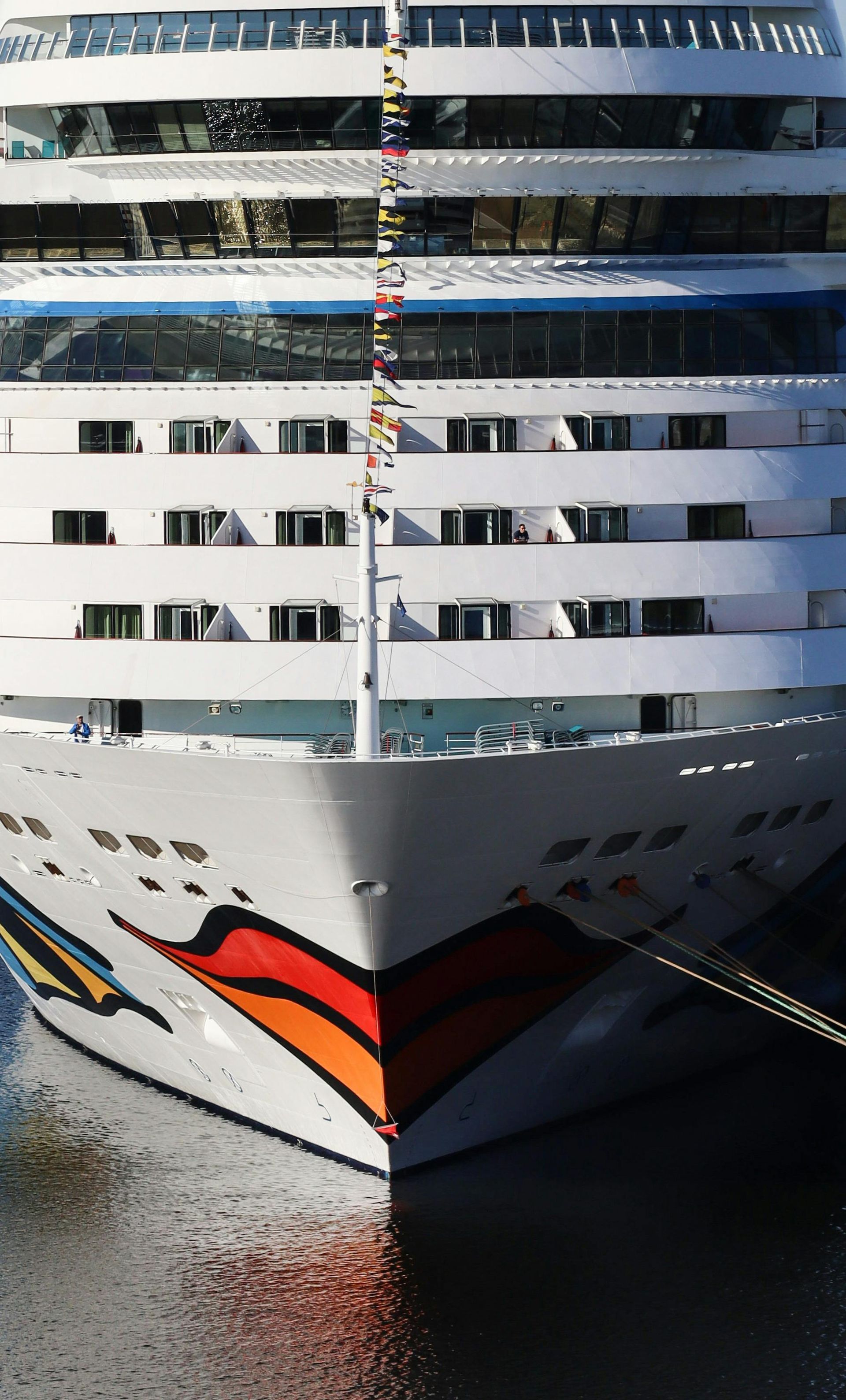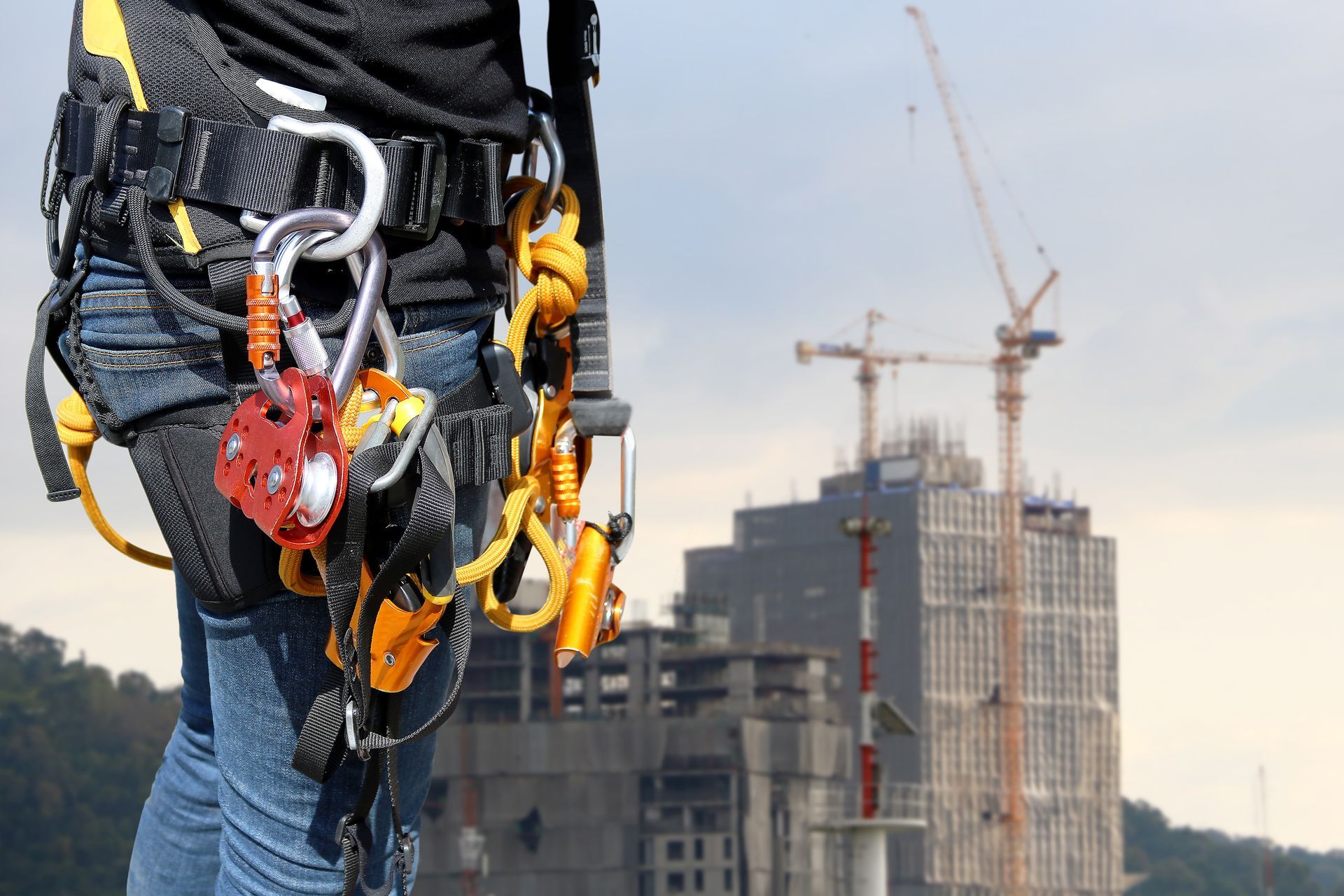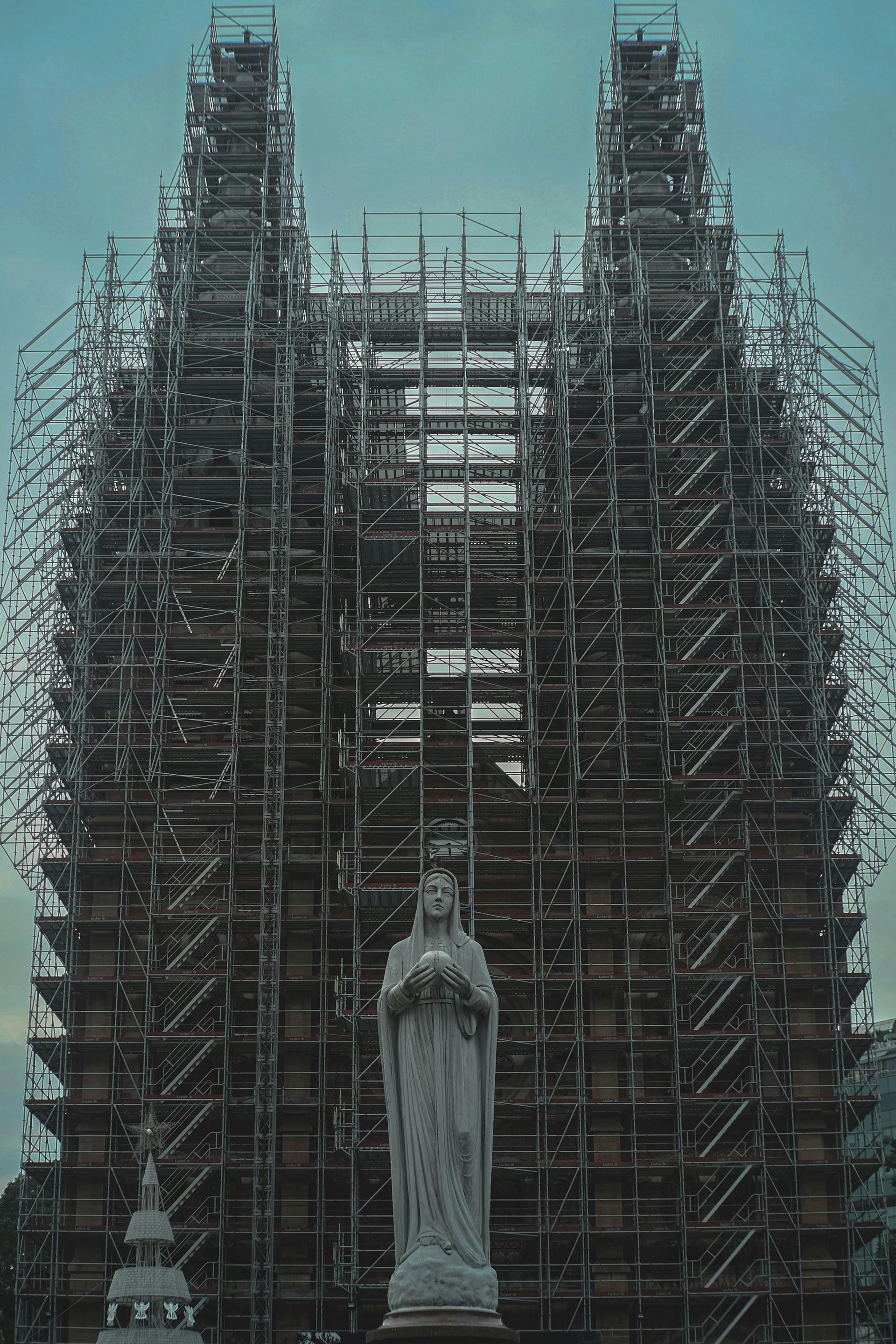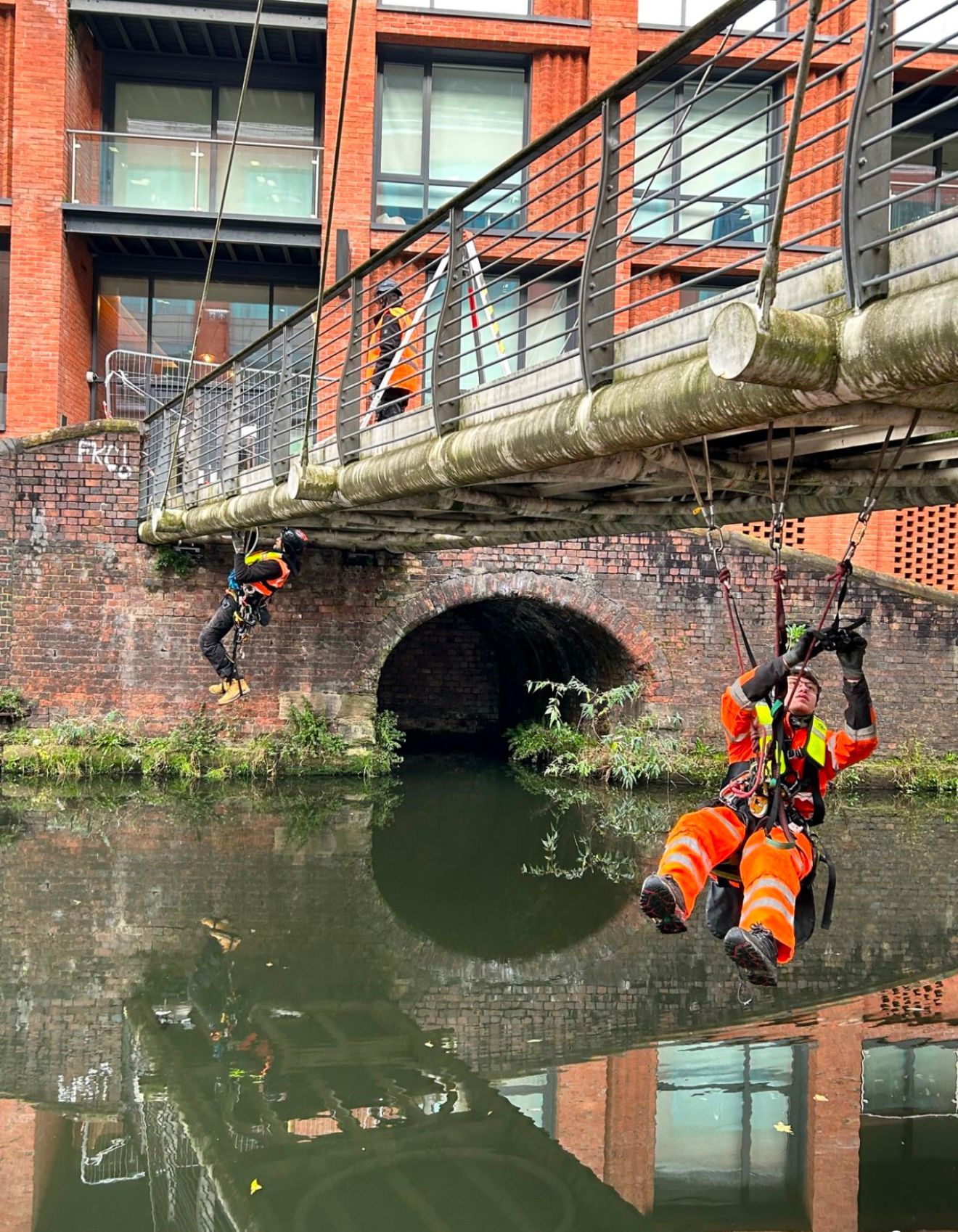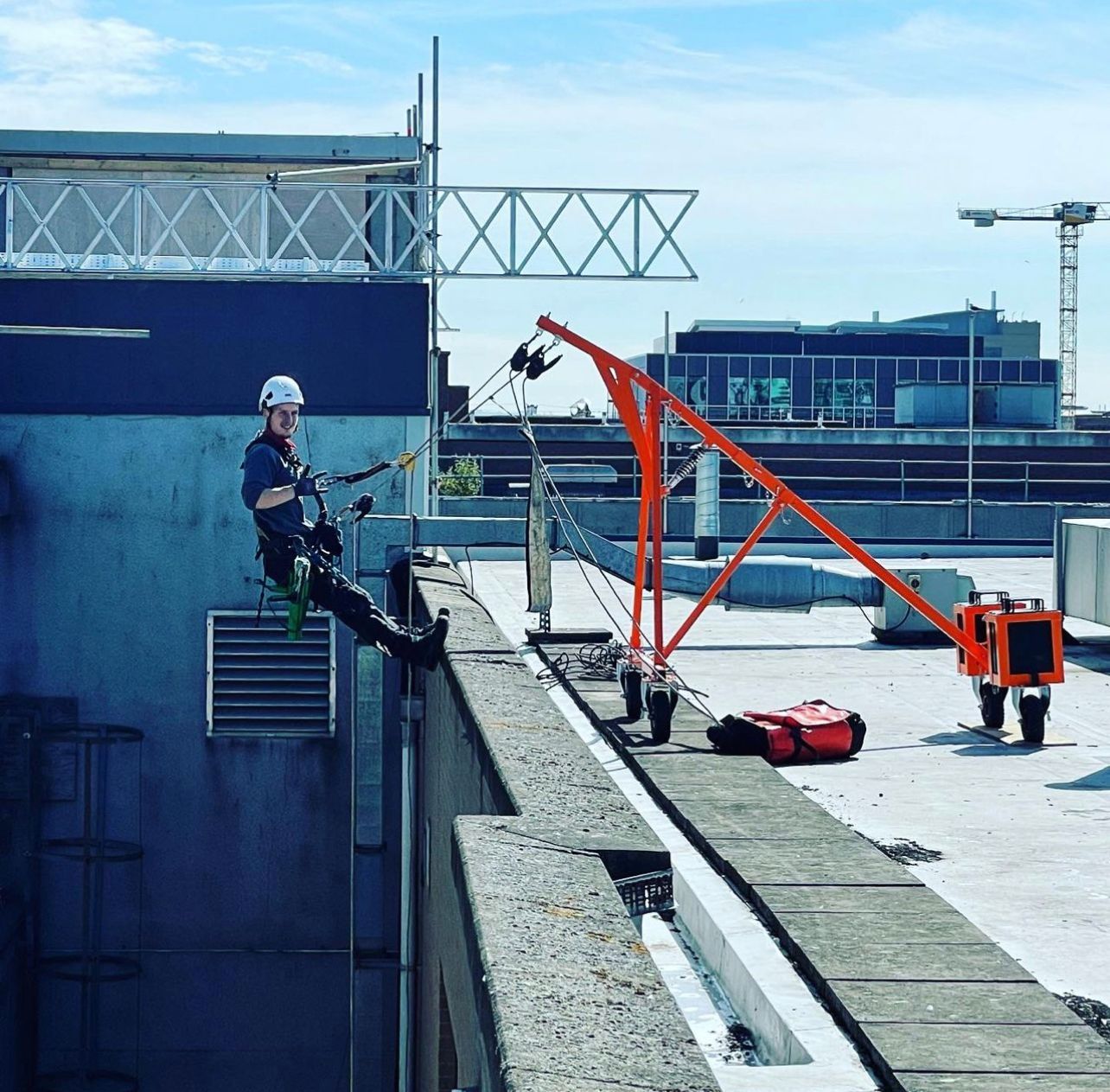Working at Height

Working at height - how to work safely
Working at height is a challenging, exciting and considered by many, a dangerous career, which is why health and safety is extremely important across all areas of the sector. All rope access technicians are trained to the highest standard and no stone is left unturned when it comes to prioritising a safe system of working conditions, at height.
As building designs continue to increase in height in towns and cities around the world, and more difficult to reach structures pop up, with ever expanding creative architectural flare there’s now a huge demand for specialist rope access teams to carry out cleaning, maintenance and repair work on these important onshore structures.
Working at height typically involves tasks in a location and environment where if safety measures are not correctly implemented, and controlled, it could result in serious injury or even death. Working safely is crucial as falling from height is one of the biggest causes of work related accidents and deaths in the UK and around the globe today, which is why the rope access industry take it extremely seriously, and when used correctly has an impeccable safety record.
Whether you’re working from a ladder or up on a roof, provide maintenance support on a wind turbine or you’re cleaning an important landmark or structure in a built up city, rope access technicians should always follow the stringent safety precautions put in place by the company they work for. Here at Dangle, our operational procedures for works at height form the very basis of what makes us an award winning company.
Here’s how you can ensure, you’re working safely!
Work at Height Services
Before you begin any work at height services, you should always carry out a thorough health and safety assessment, and If something doesn’t feel right, you should always seek out specialised help and support, before you begin. At the same time, a hazard identification and risk assessment must be undertaken. This, often dynamic assessment, will also allow you to ensure that you have the right equipment too including things like:
• Fall protection and Work positioning equipment
• Equipment used to support the user
• Anchor points
• Safety harness
• Back-ups and fall arrester devices
However, in instances where the risk of falls cannot be eliminated, all work should be carried out at the highest possible level in the hierarchy of protective control measures. Ultimately, you should never take any risks, that may endanger you or others.
Understand Fall Arrest Distance
At the same time, you should also make sure that you fully understand fall distance, as despite having all of the fall protection equipment you need, if it is not suitable to sustain a fall at the height you are working at, often referred to as a fall factor, you could land yourself in big trouble, due to the amount of shock loading placed within the system. With this in mind, you should always take the time to familiarise yourself with the type of safety equipment you need for working at the height you are working at, and ensure you’re familiar with the manufactures guidelines for its correct use.
Fall Protection PPE
When using Personal Fall Arrest Systems, you need to ensure that you also have access to the proper PPE including a full-body harnesses that meets British and European standards (BS EN) for the US its ANSI standards. All required PPE/FPE will normally be outlined in health and safety manuals.
Mandatory IRATA Training
It goes without saying that in all lines of rope access work, mandatory training is essential. In the UK the Working at Height regulations 2005 (WAHR) is powerful legislation that we all must adhere to and so it’s vital that all technicians undergo extensive training and assessments, when employed by any reputable rope access company like Dangle. Of course, training is not only required by law, but it’s also a risk that companies working across a diverse range of industries will also not take, especially as falls from height are the leading bodily harm culprit in construction every single year.
A Career in Rope Access
A career in rope access offers many different opportunities for aspiring rope access technicians and it’s actually a great career for those with a head for heights and the desire to grow, learn and progress within the industry, in a variety of trades, as the need for more multi skilled technicians grows.
If you’re thinking about becoming a fully-fledged rope access technician, you will quickly discover that the role encompasses a wide range of different skills and duties, which vary significantly depending on your experience and qualifications. General day to day roles include cleaning, repair work, welding, rust removal, industrial painting and repair work, as well as inspection jobs such as coating surveys, safety inspection and quality control, you get to travel the world and see some really exciting places, although often remote.
IRATA Trained Rope Access Technicians
All IRATA certified rope access technicians are highly trained in order to provide dynamic access solutions at height that are both safe and practical, offering clients a rapid and cost effective solution to more traditional methods.
IRATA (Industrial Rope Access Trade Association) is the leading training institution for rope access certification and there are three different levels of certification, that allow technicians to progress in their chosen field of work, whether that’s on land or offshore.
About Dangle Rope Access
Here at Dangle Rope Access, we provide a variety of comprehensive inspection, access, coatings, and composite (IACC) industrial services. Our services are available to both the private and public sectors.
We offer high-quality proven solutions that will help reduce maintenance costs in both the long and short-term. We are based in Dundee, Scotland and also have offices based in Edinburgh, along with our newly established training centre in Northern Ireland Dangle Academy. Due to our company size and structure, we are able to offer a flexible and versatile approach to the way we run our business and the services that we offer our clients. And, as a leading painting company, we’ve worked on several renewable energy projects in the UK, Europe, and the US.
We work with both on and offshore with wind farm operators, and asset owners. For offshore wind farm maintenance, to onshore building maintenance, we can cover both the East and West coasts.
To find out more about how our team can help you contact us today. Our friendly, professional and helpful team is always on hand to help.
We'd love a share...

